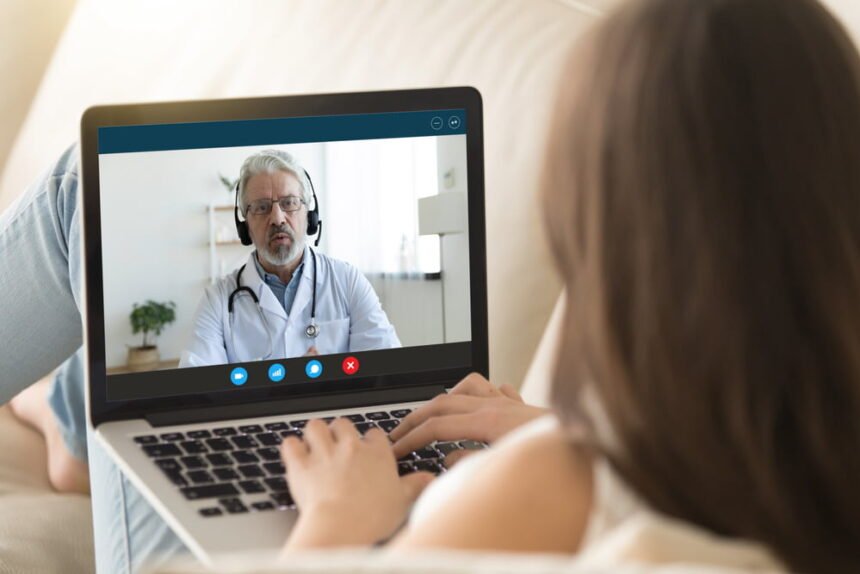A healthcare method known as telemedicine or telehealth makes use of technology to assist patients over vast distances. It was initially used in the US to treat patients who lived far away, but due to its practicality, it is now a widespread practice. The market for telemedicine is growing over 45% a year and will be worth an estimated $309.9 billion in 2030.
Although there are some limitations of telemedicine, it also has a number of key benefits. When extensive hospital treatment is not required, telehealth app development is frequently employed to offer doctor support in non-emergency situations.
What are the costs and key features of telemedicine app development?
Cost
The telemedicine app development cost and the typical time needed to complete the app varies depending on the capacity of the team, the constraints, and the team’s prior expertise with related medical tasks. To ensure a high-quality outcome, you must pay close attention to a few distinguishing elements, which typically demand additional investment.
The features that you choose while working with a telemedicine app development business will determine the overall cost to construct a doctor-on-demand app. Some of the most important features to evaluate include:
- iOS and Android native app development UI/UX design
- backend programming
- website creation
- project administration
- quality control
According to the most recent estimates, the expenses heavily rely on the hourly compensation of the healthcare app development company. The average cost ranges widely from $20/hr to $50/hr when producing similar types of telemedicine apps with unique requirements for different clients.
However, the overall cost for a straightforward on-demand doctor app typically ranges from $25,000 to $40,000 and can reach $40,000 to 70,000.
The sort of functions and performance you require will have a significant impact on the price of designing telemedicine software.
Key features
Every app must have certain basic components, but telemedicine applications for healthcare also have some unique characteristics that set them apart from other wellness apps. Healthline has a list of some of the best telemedicine apps on the market. An overview of a telehealth platform’s features may be found here.
User profile
A user’s information, including their image (recommended), home, gender, region, time zone, email, mobile number, and alternate numbers for account setup or emergencies, is displayed in their profile, which is a crucial component of any profile. Additionally, it must show the record of visitations and the appointment agenda.
Web/mobile patient panel
Usually contains a summary of the health issues that need to be treated, a panel of doctors who can provide such services, and an application for arranging meetings. Medical, mental, and family health histories, lifestyle pages, payment options, settings, and patient activity on the platform are examples of a typical collection of tabbed pages.
Geolocation
The creation and launch of telemedicine apps aid individuals in avoiding travel. Because of this, they constantly ask for the user’s geolocation in order to discover local pharmacies and clinics, provide driving instructions, and estimate the time of arrival at the desired site.
Communicative approaches
The following integrations must be prioritized throughout the creation of telehealth apps in order to provide treatment supervision and real-time interaction:
Live video conferences, in-app calling, and the opportunity to chat in-app.
A development team’s objective is to create a user-friendly messenger with functionality for file sharing, audio, and video in order to maintain the quality of transferred content and provide a stable connection.
Electronic Medical Records (EMR)
The foundation of an EMR is the entry of fresh patient information and its update after each session. Providing a follow-up on the person’s status, it permits subsequent diagnostics for a patient. EMR streamlines the doctor’s workload, avoids duplicate health records, and integrates all data pertaining to the medical condition.
Payment method
The patient should have the option to choose their payment method, insurance, and health plan (if any). Through the integration of various payment gateways, including cards, mWallet, net banking, etc., patients may make secure online payments.
Bottom line
Healthcare apps are revolutionizing the healthcare sector. Some of the most important apps in the healthcare sector are telemedicine apps.
As users’ faith in telemedicine services steadily grows, telemedicine app development is becoming an increasingly viable option for business owners. Technologies make it possible to create a whole clinic without any physical structure, schedule doctor visits without a lot of paperwork, and cure patients effectively without requiring them to depart their houses.
However, because healthcare is a particular industry that is subject to both state and federal regulations, you must abide by the security, safety, and liability rules of the relevant Acts in order to keep your product successful on the market.

